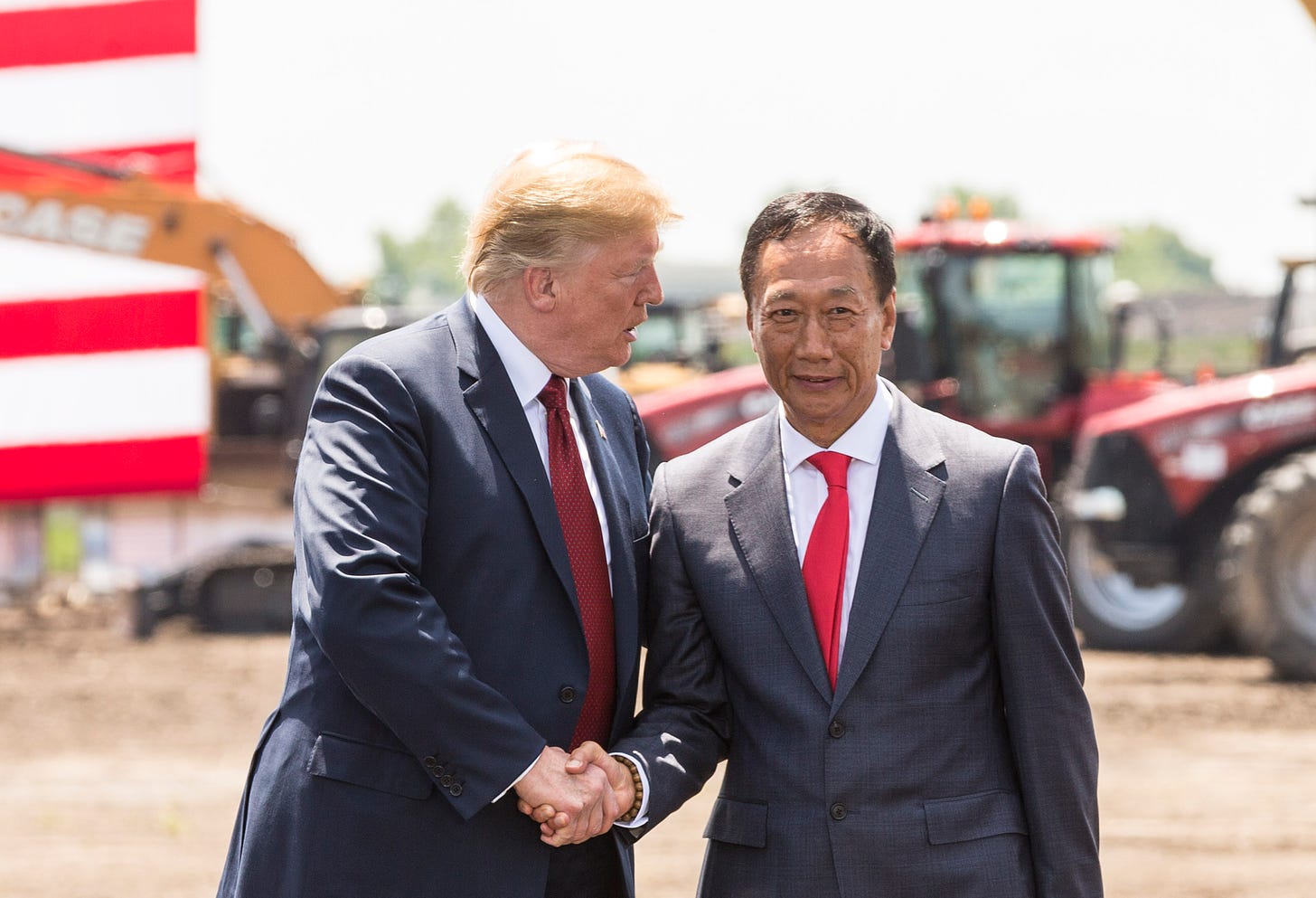How the Foxconn Boondoggle Resembles the Fyre Festival

Foxconn! During Donald Trump’s first year in office, the mere name of the tech giant was synonymous with the president’s bold promises to reinvigorate America’s sagging manufacturing sector. The Taiwanese megacorporation, which assembles approximately 40 percent of the world’s consumer electronics, had agreed to open a mammoth, state-of-the-art plant near Milwaukee—thanks to a king’s ransom from then-Wisconsin Gov. Scott Walker, who had promised the company an eye-popping $4 billion in tax breaks and subsidies. (An independent analysis found that the state would recoup their losses on the deal by 2043.) But even that came cheaply as far as Trump was concerned: He was bringing American jobs back, and everything else was fine print. At the groundbreaking ceremony in June 2018, Trump described the soon-to-be factory as the “eighth wonder of the world.”
That was then. Now, the whole thing has devolved into chaos. Last year, Foxconn started telling everyone to lower their factory expectations, suggesting that the new plant would not be the cutting-edge “Generation 10.5” factory they’d promised, but a smaller, cheaper “Generation 6” plant. Then, this week, the tech giant abruptly announced that it wouldn’t be “building a factory” after all, but a campus that would hire mostly white-collar workers for positions in areas like research and development.
“In terms of TV, we have no place in the U.S.,” Foxconn representative Louis Woo told Reuters this week, citing the comparatively high cost of employing U.S. workers. “If a certain size of display has more supply, whether from China or Japan or Taiwan, we have to change, too.”
As you’d imagine, this didn’t go over great at the White House. So by Friday, Foxconn was in full damage control mode: “After productive discussions between the White House and the company, and after a personal conversation between President Donald J. Trump and Chairman Terry Gou, Foxconn is moving forward with our planned construction of a Gen 6 fab facility, which will be at the heart of the Wisconn Valley Science and Technology Park. This campus will serve both as an advanced manufacturing facility as well as a hub of high technology innovation for the region.”
Which sounds great, except that it doesn’t address Foxconn’s central problem: the competitive disadvantage of hiring manufacturing jobs in the U.S.
These problems, of course, were obvious from the moment the company first inked the deal. What’s going on here? The answer is obvious: In 2017, Wisconsin Republicans set out to give Foxconn an offer it couldn’t refuse. Free goodies worth $4 billion isn’t chump change, even to a tech giant; Foxconn snapped it up and figured it would hash out the details later. Now, the goal is obvious: Sink as little actual investment into an unprofitable facility as it can, while still maintaining enough just enough activity at the site that it can still pocket the grant money. In order to receive the promised tax breaks, Foxconn must still follow through on its employment promises—but they’re under no obligation to provide the manufacturing-sector jobs the package was sold on in the first place. And if the whole thing falls through, Foxconn won't even be responsible to refund all the construction costs: according to the Wall Street Journal, “the state is on the hook for 40% of the public bonds that finance the local expenses if the project flops.”
The whole sordid affair—grand, sweeping promises from both Foxconn and Trump, the obvious problems swept under the rug from the get-go, the insultingly meager attempts to show the company’s still operating in good faith—call to mind 2017’s other gargantuan boondoggle that’s currently enjoying a cultural moment: the Fyre Festival, entrepreneur Billy McFarland’s wildly hyped island paradise music festival for loaded millennials. Promised an unbelievably lush weekend of gourmet meals in luxury cabanas, rubbing elbows with famous musicians and social media influencers, Fyre attendees who arrived on the island of Great Exuma were instead plunged into dystopia: FEMA tents and cheese sandwiches and gravel lots, inadequate restrooms, inadequate medical care, mosquitoes thick in the air, sharks infesting the waters off the coast.
What had happened quickly became clear. Fyre’s organizers had gone in with no real plan, selling the festival first and figuring they’d iron out the details later. As the festival approached, they scoffed at concerns that a disaster was brewing: “Let’s just do it and be legends, man,” one planner infamously said. Then, as panic mode set in, they abandoned their pie-in-the-sky luxury event plans and tried to cobble things together enough to save their own asses. In this, too, they failed: After the event blew up, McFarland was convicted of wire fraud and sentenced to six years in federal prison.
Foxconn isn’t quite at the Fyre breaking point yet. And when the company gets there, things surely won’t go as badly for it as it did for the Fyre folks: The company has better lawyers on retainer, for one thing, and probably shied away from doing anything actually illegal. But the people the new plant was ostensibly supposed to help—the blue collar workers who were promised well-paying new jobs by the thousands, and who paid through the nose for them with their tax dollars—are getting screwed just as hard as the tech bros who showed up for a weekend of top-shelf partying and ended up with Lord of the Flies.
Two years later, Fyre is still a hot topic: Netflix and Hulu each released a documentary on the boondoggle last month. The travails of dumb rich millennials, for good or ill, command our attention. Whether we’re as likely to dwell on the more quotidian case of blue-collar Trump supporters getting the shaft remains to be seen. It doesn’t seem too likely. Foxconn—and Trump—are banking on that.










